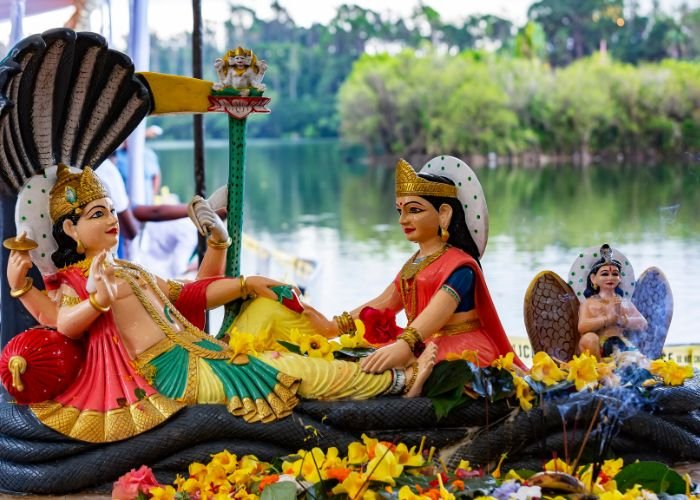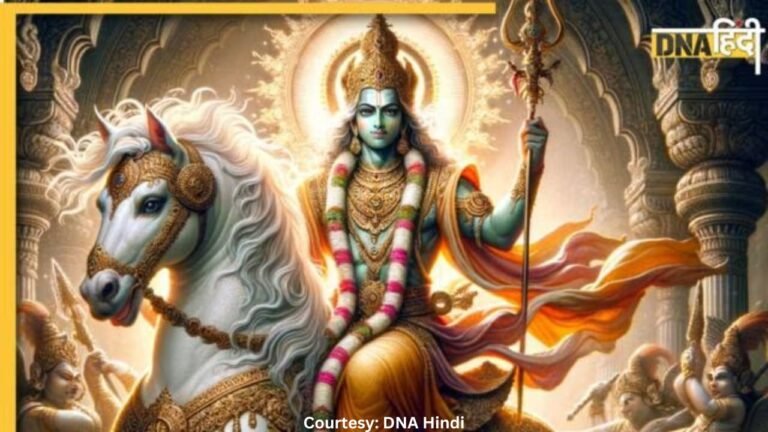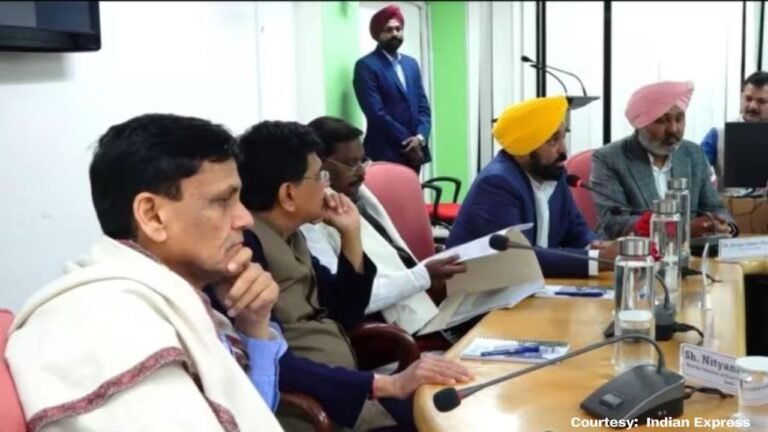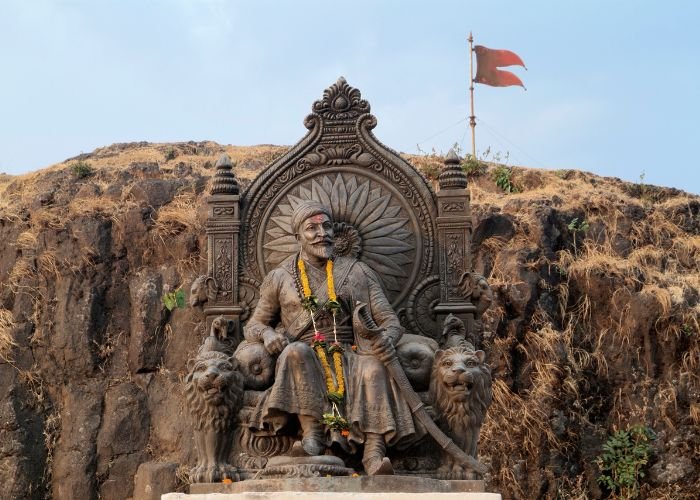Recently, there has been much discussion about Ayodhya’s Shri Ram Temple, which was inaugurated on January 22, 2024. Following this, another temple in Uttar Pradesh has entered the realms of discussions, this time in the Sambhal district. The temple, known as Kalki Dham Temple, had its foundation stone laid by Prime Minister Narendra Modi. However, do you know what makes the Kalki Dham Temple in Sambhal so special?
Important facts related to Kalki Dham:
- Firstly, let’s understand the location of Kalki Dham Temple in the Sambhal district. The temple is slated to be constructed in the Ankara Kaboh area.
- The temple’s spire will rise to a height of 108 feet, with a platform at the top at an additional elevation of 11 feet.
- The construction of Kalki Dham Temple will utilize stones similar to those used in the construction of the Somnath Temple in Saurashtra and the Shri Ram Temple in Ayodhya.
- Kalki, considered the 10th incarnation of Lord Vishnu, is believed to appear in the future according to Hindu scriptures. It is said that during the last phase of the Kali Yuga, Lord Vishnu will take the avatar of Kalki to bring an end to the age of darkness.
- Near the ancient Kalki Dham Temple, there is a white horse idol placed in the Kalki Peeth. According to tradition, when Kalki incarnates, he will ride a white horse. The idol is positioned with three hooves on the ground and one in the air. It is believed that when the fourth hoof touches the ground, Kalki will be considered to have incarnated.
- The temple will be constructed on a spacious five-acre site to accommodate the anticipated influx of devotees in the future.
- The construction of Kalki Dham Temple will strictly avoid the use of any iron or steel. Instead, the temple will be built using the traditional interlocking method, a style prevalent in temple construction in India.
- The completion of the temple is expected within the next five years, after which devotees will be able to visit this grand edifice.
- The temple will feature 10 sanctums showcasing the ten avatars of Lord Vishnu.
- Additionally, the temple will have 68 holy water tanks, and a sculpture will be installed while preserving the ancient Kalki Peeth.
Ten avatars of Lord Vishnu, also known as the Dashavatara:

- Matsya (The Fish) Avatar:
- In this avatar, Lord Vishnu took the form of a fish to save the ancient scriptures (Vedas) and the sage Manu from a great deluge.
- Matsya guided Manu’s boat through the turbulent waters, ensuring the survival of humanity and knowledge.
- Kurma (The Tortoise) Avatar:
- Lord Vishnu incarnated as a tortoise to support Mount Mandara during the churning of the ocean (Samudra Manthan).
- The churning of the ocean was to obtain the nectar of immortality (amrita).
- Varaha (The Boar) Avatar:
- In this form, Lord Vishnu manifested as a boar to rescue the Earth (personified as the goddess Bhudevi) from the demon Hiranyaksha.
- Varaha lifted the Earth out of the cosmic ocean, symbolizing the restoration of cosmic order.
- Narasimha (The Man-Lion) Avatar:
- Lord Vishnu took the form of Narasimha to protect his devotee Prahlada and to defeat the demon king Hiranyakashipu.
- This avatar represents the simultaneous existence of ferocity and compassion.
- Vamana (The Dwarf) Avatar:
- In the Vamana avatar, Lord Vishnu appeared as a dwarf Brahmin to subdue the demon king Bali.
- Vamana asked for three paces of land and then expanded to cover the entire universe in three steps.
- Parashurama (The Warrior with an Axe) Avatar:
- Lord Vishnu incarnated as Parashurama, a Brahmin warrior with an axe, to rid the world of corrupt and oppressive Kshatriya rulers.
- Parashurama is known for his martial skills and dedication to upholding dharma.
- Rama Avatar:
- The seventh avatar, Rama, is the central figure in the epic Ramayana. He exemplifies ideal kingship, virtue, and devotion to duty.
- Rama’s quest to rescue his wife Sita from the demon king Ravana is a timeless tale of righteousness.
- Krishna Avatar:
- Lord Krishna, the eighth avatar, is a charismatic and divine figure in Hinduism. His teachings are recorded in the Bhagavad Gita.
- Krishna played a crucial role in the Mahabharata, guiding Arjuna and establishing the principles of dharma.
- Buddha Avatar:
- This avatar represents the historical Buddha, Siddhartha Gautama. Lord Vishnu incarnated as Buddha to teach compassion, non-violence, and the path to enlightenment.
- Buddha’s teachings laid the foundation for Buddhism.
- Kalki Avatar:
- The future avatar, Kalki, is yet to come. It is prophesied that Kalki will appear on a white horse wielding a sword, bringing an end to the current age of darkness (Kali Yuga).
- Kalki is expected to restore righteousness and usher in a new era of truth and virtue.
These avatars of Lord Vishnu signify his willingness to incarnate whenever there is a decline in dharma (righteousness) and an increase in adharma (unrighteousness) to restore cosmic order and protect the virtuous.








